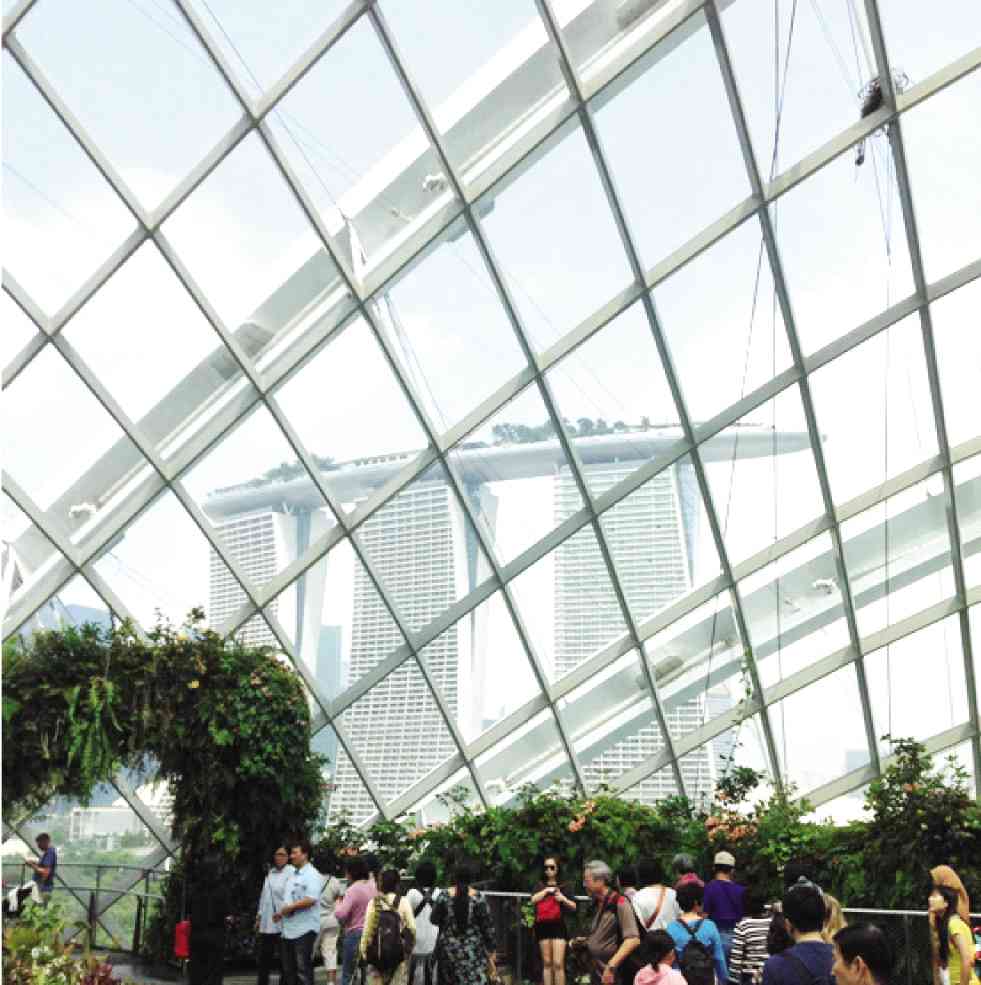Singapore’s green building masterplan

THE VIEW from inside the glass dome of the Cloud Forest situated along the edge of Marina Reservoir Amado de Jesus
Singapore continues to lead in the green building industry in the region. During the International Green Building Conference, held recently in the Sands Expo and Convention Center in Marina Bay Sands, one speaker was so impressed with Gardens by the Bay that he was prompted to say, “Singapore had the audacity to create such a unique project,” much to the delight of the hosts.
The Gardens by the Bay, located within 101 hectares in central Singapore, is one of the city’s latest projects earning a Green Mark Platinum Certificate. The project features extensive greenery, and showcases the horticultural and garden craftsmanship, floral artistry and a diverse range of plants. The conservatory complex comprises two cooled conservatories under glasshouses—the Flower Dome and the Cloud Forest—situated along the edge of Marina Reservoir.
The unique project is part of a strategy by the Singapore government to transform Singaporean from “Garden City” to a “City in a Garden.” It aims to raise the quality of life by enhancing greenery and flora in the city.
Green transformation
The green building transformation of Singapore started in 2005 with the birth of the green building movement and the launch of the Building and Construction Authority’s Green Mark scheme, a green building rating system. In 2006, the first Green Building Masterplan was launched.
Article continues after this advertisementIn 2009, the second Masterplan focused on greening the large existing building stock, with a target of at least 80 percent of the buildings in Singapore to be green by 2030.
Article continues after this advertisementBy 2014, with more than 25 percent of buildings greened, the third Green Building Masterplan was launched. It focused on the involvement of building tenants and occupants in order to encourage behavioral changes to achieve lower energy consumption.
Landmark legislation
To establish a national benchmarking and a basis for energy monitoring, the BCA effected landmark legislation for existing buildings. It required the annual submission of building information and energy consumption data.
Among those required were offices, hotels, retail buildings and mixed development. The information has been shared with building owners to help them make more informed decisions and improve their buildings’ performance.
Online submission of info
To facilitate the submission of information by the building owners, an online submission process was created which was known as the Building Energy Submission System (BESS). For the first year, building owners are required to submit all necessary information.
The submission was further improved when the consumption data from monthly electricity bills was secured by BESS directly from utilities supplier.
In the following years, building owners can update their building information online.
Moving forward with green
In strong support of the Singapore green urban city growth, the Philippine Green Building Initiative was a partner in the September 2015 Singapore International Green Building Conference.
Aside from launching the Green Building Code, PGBI is working on a popular building greening project also with a target number of buildings to be greened in a specified number of years. This will be launched soon.
Singapore’s success in the green urban projects stems from the united collaboration between the government, the private sector and the academe.
These green urban projects are done to bring forward climate resilience. Hopefully we put into reality a sustainable mass transport system in the megacity of Manila. That would be a smart move.
For comments or inquiries, e-mail [email protected]